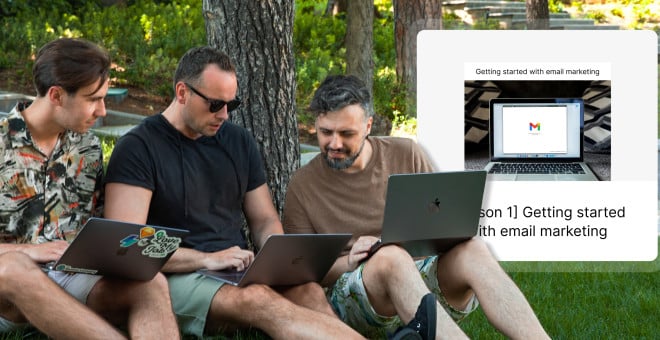22 proven strategies for marketing an online course
 Paulius, marketing team, and Migle, product team
Paulius, marketing team, and Migle, product team
Phew! You’ve finished creating an online course filled with insight only you can offer. The hard work is done! Now you can sit back and wait for the signups to start rolling in.
Right?
Unfortunately, this rarely happens. You need a solid marketing strategy to build awareness and interest in your product. Read this article to learn how to market your online course so you can start generating sales ASAP!👇
22 expert ways to market your online course (with examples)
Here are 22 strategies you can use to market your online course. These course promotion strategies come from the MailerLite customers featured in our email marketing case studies, our learnings from promoting the MailerLite academy, and top online course creators we love.
Choose ideas that resonate and use these to get your course in front of more people. Onto the list!
Want to learn how to create an online course learners love? Then hit the link below.
1. Build a website or landing page
The first step to promote your course is to build a website. Or, if you already have a website, build a dedicated landing page for your course. You’ll use the other strategies on this list to send people to your site and convert them into subscribers.
Your website and landing page will promote the benefits of your course to encourage people to buy.
Add information about:
What people will learn on your course and how it will improve their life
Specific outcomes people will experience
Information about why your course is better than the alternatives
Testimonials showing how others have benefited
A clear offer and call to action
Read this article to discover more about how to craft landing page copy that converts and then implement the tips in your online course landing page.
A landing page is a stand-alone page designed to promote a specific offer. A website is a collection of pages that could include sales pages, your blog, about pages, and more. You can easily create both with the MailerLite website builder.
Case study: 100 Days of No Code
The website for 100 Days of No Code is an excellent example of a course website. It includes information about why people should join the course, its benefits, easy signup links, pricing, and testimonials.
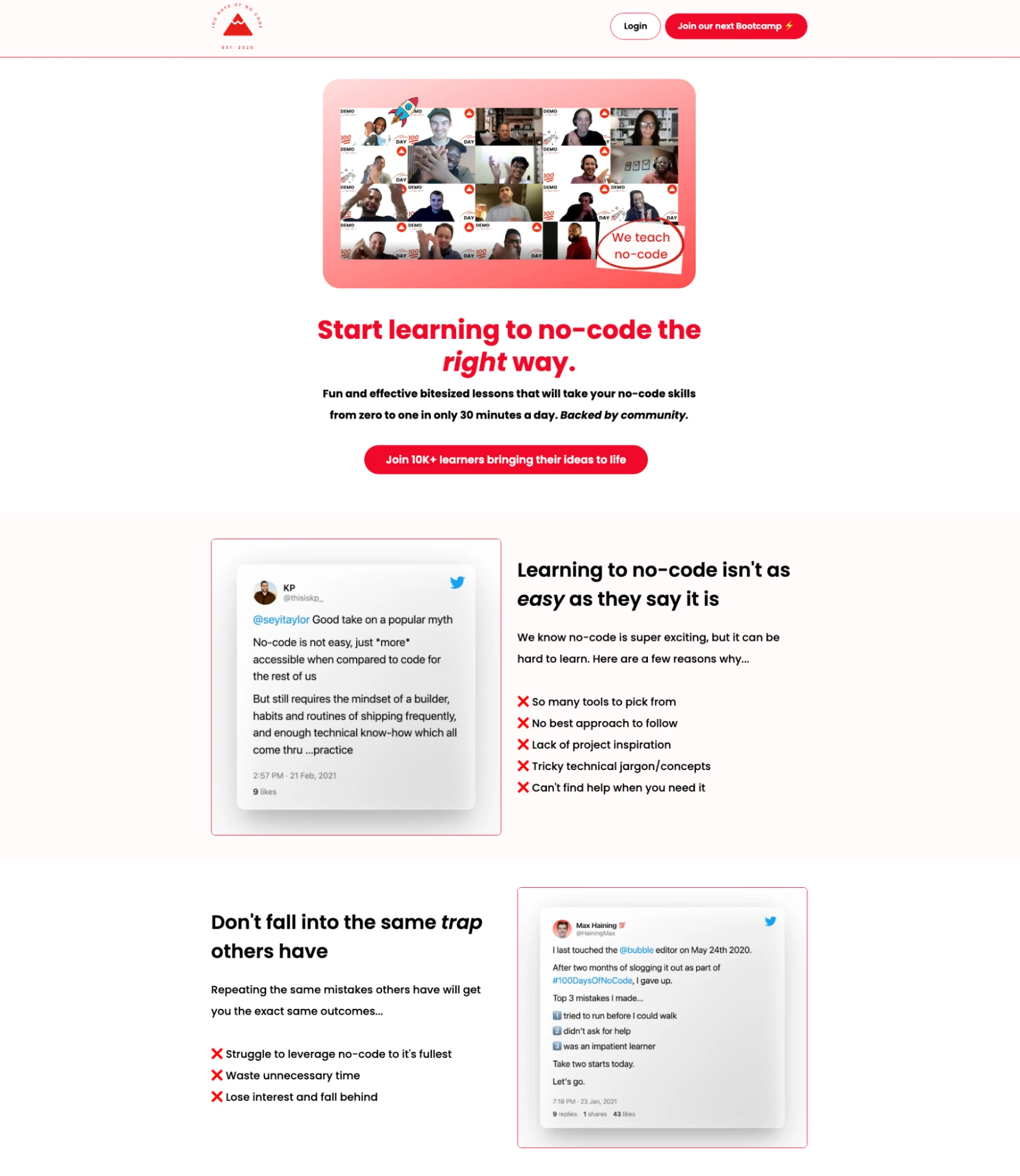
Find out more about how to build your own website here.
2. Create lead magnets
Lead magnets are freebies you offer to people who are interested in your course but not ready to buy.
People can access the gated content in exchange for their email addresses. You can then send messages to deepen your relationship with the buyer by showing how valuable your content is.
The key is to create a lead magnet that genuinely appeals to the buyer. It should be something related to the challenge that your course solves.
The lead magnet you choose will depend on your audience. A knitting course provider could offer free knitting templates. While a course about blogging could give access to a webinar that discusses a challenge facing bloggers.
You could even create multiple lead magnets targeting different pain points and then use segmentation to send targeted content.
Case study: The Sculpt Society
The Sculpt Society is a dance cardio, yoga and meditation program. The course costs $19.99 per month but the company offers two free lead magnets as part of its sales and marketing strategy.
The first is access to a free newsletter and quickie booty workout; the second is a 7-day free trial. If the user signs up for either of these two offers, the company can promote its paid course to encourage them to buy.
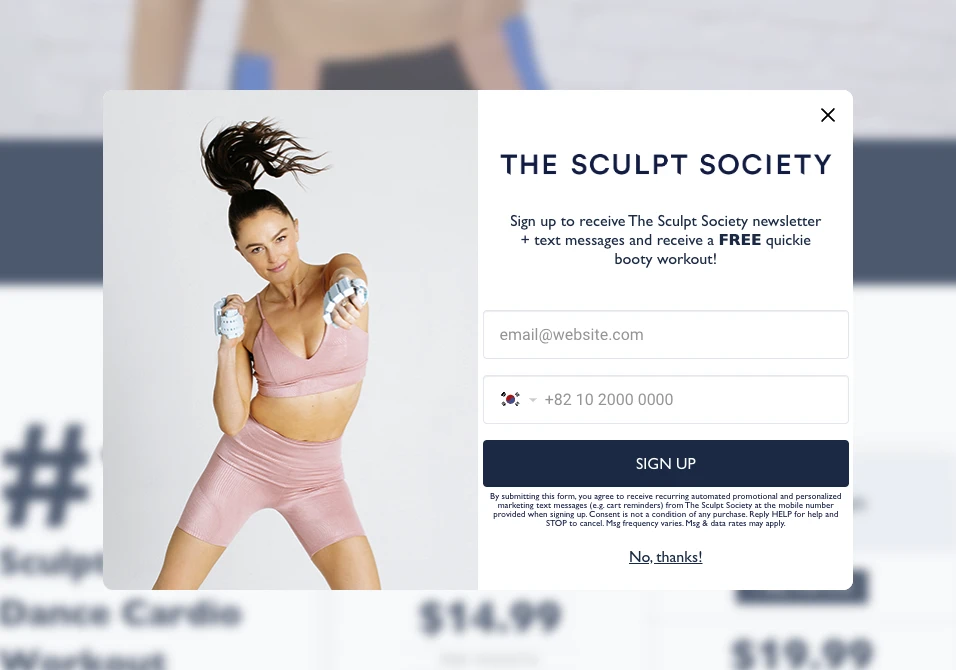
3. Create a nurture sequence
When people sign up for your lead magnet, they join your email list. Use an automated lead nurture sequence to convert them into buyers.
A typical nurture campaign will:
Educate people about your business and product
Offer social proof, case studies, and testimonials
Deepen the relationship by learning about subscribers
Promote an enticing offer to get people to sign up for your course
You can automate this entire sequence so it goes out whenever someone signs up for your lead magnet.
Use MailerLite to set up a workflow that includes all the emails in your campaign. You can then schedule each email based on factors like the time that has passed since the last email or how they interact with your marketing campaign.
Here’s an example of a typical campaign:
Welcome email: Send as soon as someone joins your list and include a link to access your lead magnet.
Educational content: Send one day after the welcome email and provide actionable advice to show your course has value. For example, if your course is about saving money to buy a first house, include 5 daily changes people can make to start saving.
Social proof email: Send one day after the educational content email and include information about how people have benefited from your course.
Offer email: Send one day after the social proof email and provide details about your offer
Check out our lead magnet nurture sequence example to see how it could look once set up in MailerLite.
Ignite your course sales
MailerLite's powerful email marketing toolkit makes marketing your course a breeze. Build landing pages, nurture leads, and collect payments with plans starting at $9 per month.
Case study: MarketingProfs
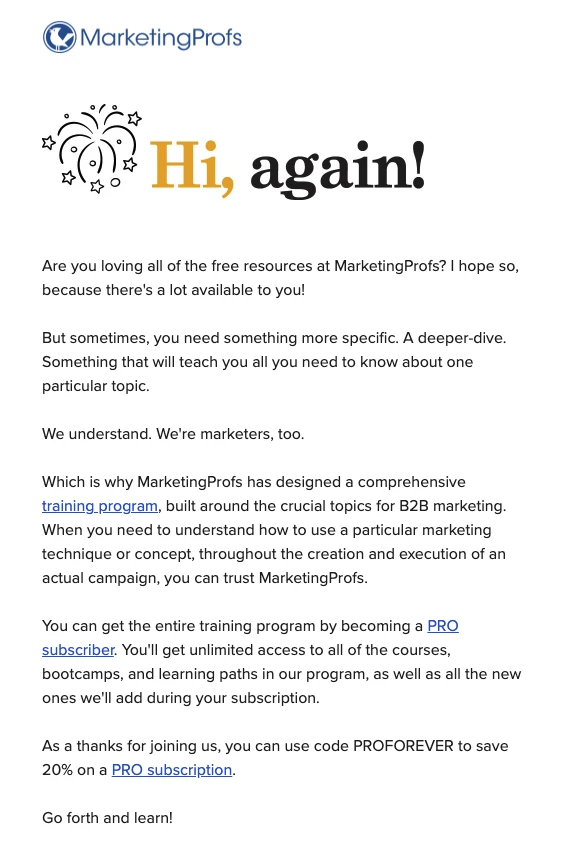
MarketingProfs uses email marketing to convert people who sign up for one of their lead magnets into paid customers.
The emails highlight the company's free resources while showcasing the benefits of becoming a paid member. They even offer a discount for people who join.
4. Promote the course in your newsletter
A newsletter is one of the most effective ways to generate course sales because your list is filled with people who love interacting with your brand.
Offering preorders is an effective way to generate sales with a newsletter. Announce that you have a new course coming, introduce what people will learn, and provide a clear link that subscribers can use to buy.
Case study: Buildcamp
Buildcamp’s Gregory John used the above strategy to presell his course that taught students how to build no-code apps with AI.
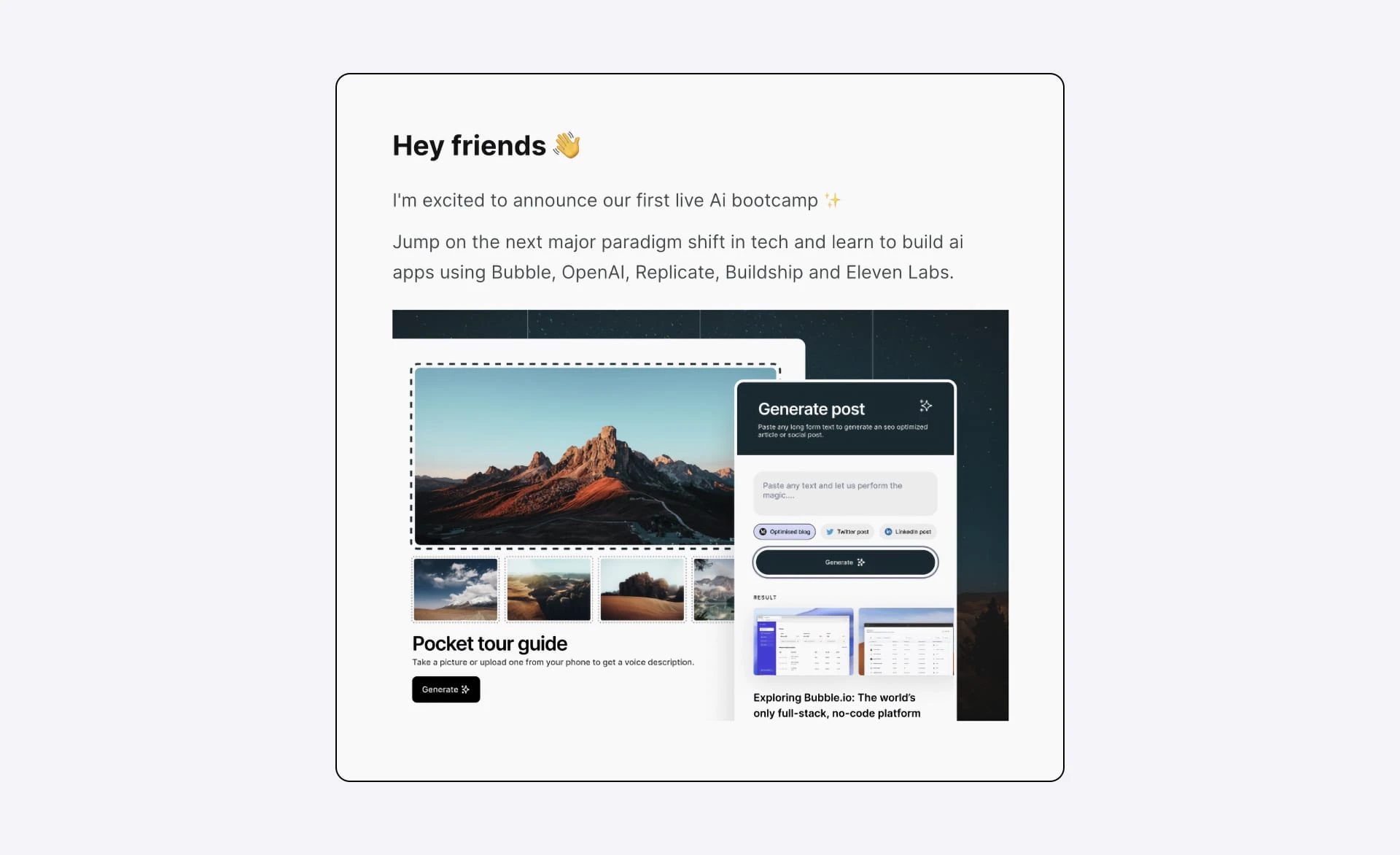
He sold out the initial 50 seats of his $199 course in just 6 hours by promoting the course in his newsletter. His marketing efforts also generated a waitlist of another 250 people within 24 hours.
“I launched a bootcamp recently. It was 50 seats which all sold out and I had an additional 250 on the waitlist within 24 hours.”
5. Ramp up your social media presence
Social media marketing is a great way to build your audience for free. You can promote your course while you build this audience.
The most effective social media platform is the one your audience uses. Professional courses do well on LinkedIn and Twitter, while lifestyle courses are more likely to do well on Instagram or TikTok.
Find out where your target audience hangs out, and then concentrate your efforts on that social media platform.
Here is a rundown of the main channels:
LinkedIn: Promote career-focused or B2B e-learning courses
X, Threads and Bluesky: Participate in threads and discussions linked to your niche
Facebook: Join or create Facebook Groups in your area
Instagram: Use visual content to promote your brand
TikTok: Share fast, fun and engaging video content
Reddit: Get involved in community discussions related to your industry
Don’t spread yourself too thinly across all these platforms. It’s better to optimize your content to perform well on 1 or 2 channels.
If you're unsure which platforms your target audience uses, you can use SparkToro to find out. Just choose a website your target audience is likely to visit and the tool will provide details about these people, including the social sites they use most. What's more, it's free to generate 5 audience reports a month.
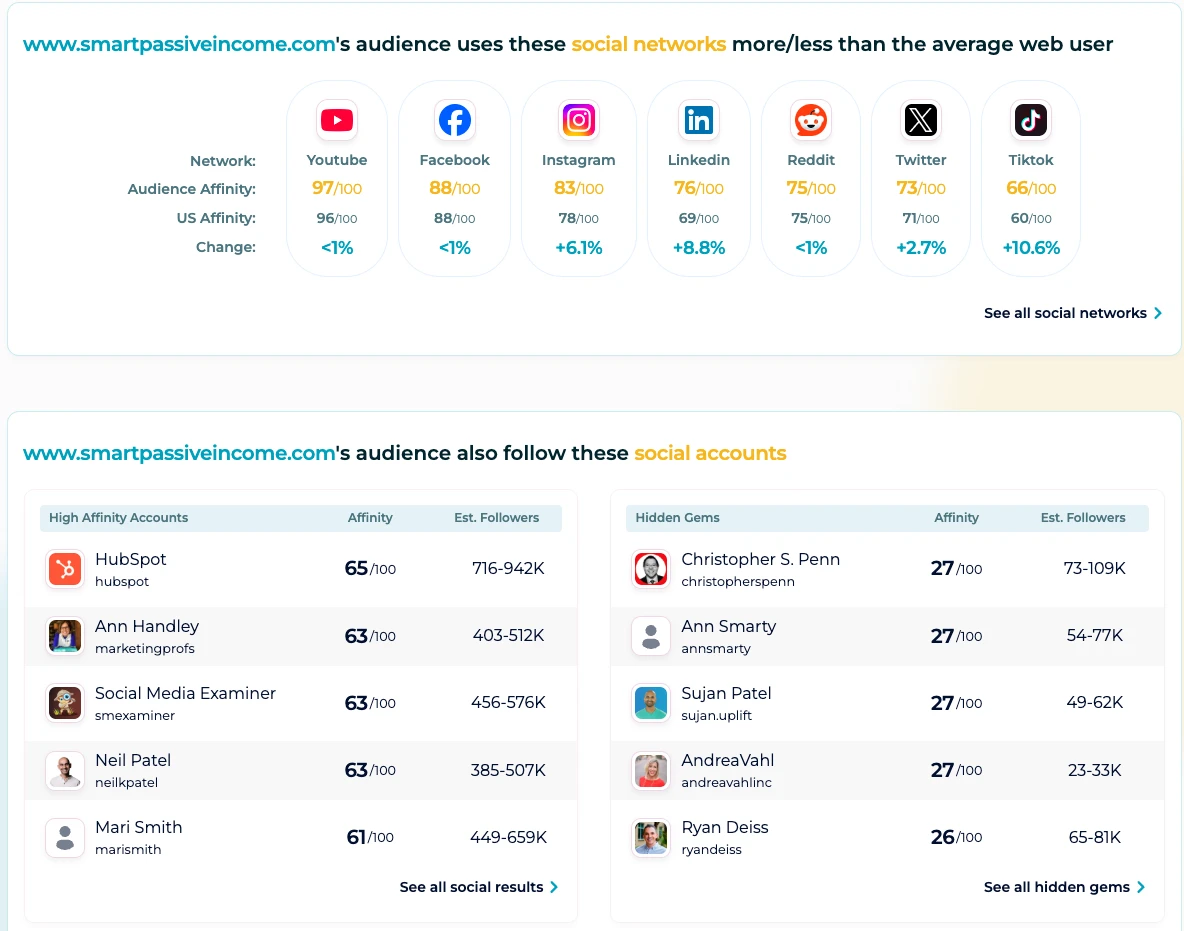
Use social media to grow your audience by adding value to community discussions while building trust and expertise. People will ignore your content if it is promotional without adding value.
Case Study: Miss Excel
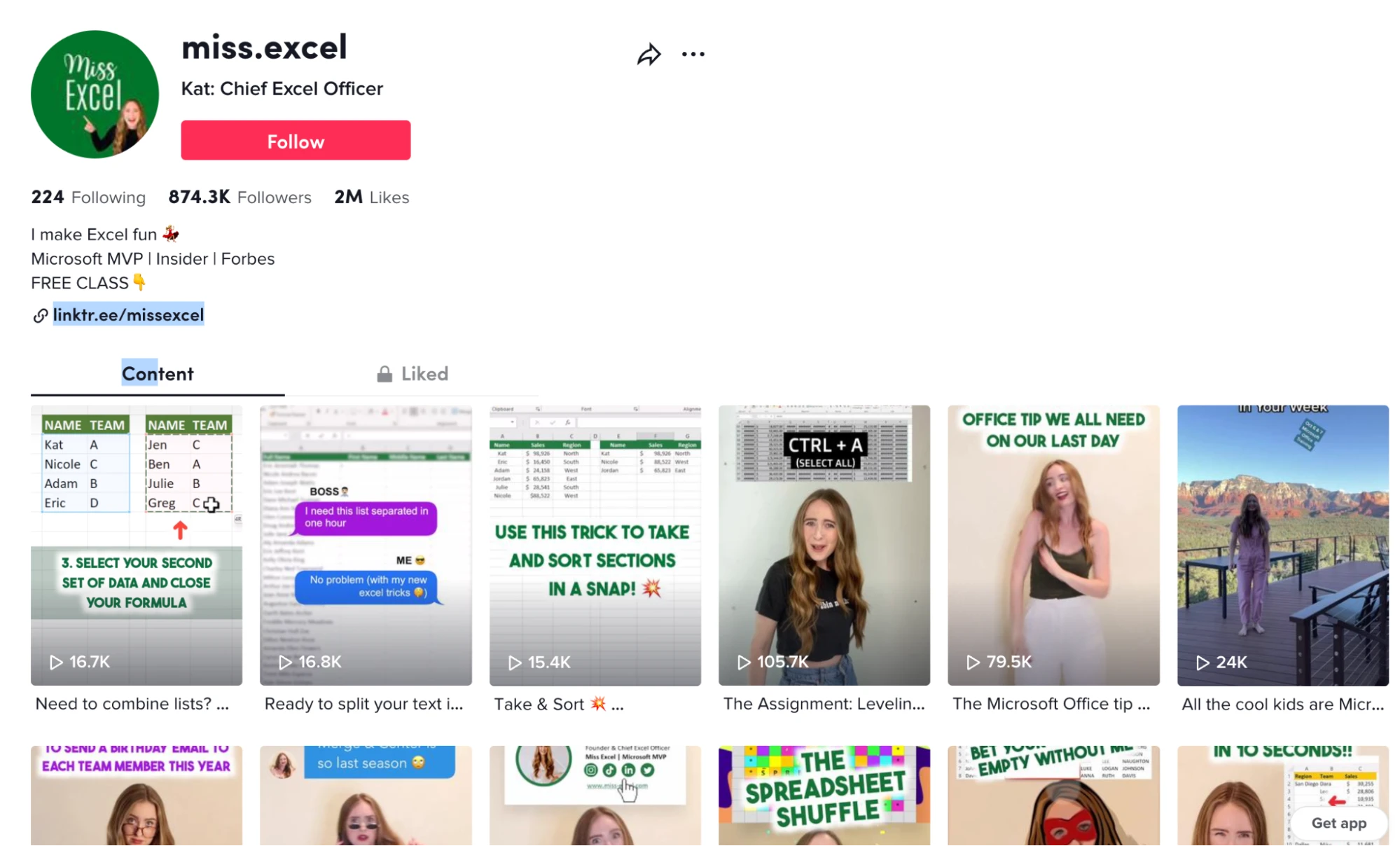
Miss Excel is a fantastic example of someone who effectively built an audience on social media and then used this to sell her course.
She creates TikTok videos that provide useful tips on how to use Microsoft Excel, then promotes her course and training via posts and her profile link. These courses include a free lead magnet and several paid products.
6. Set up post-sale automations to cross-sell courses
If you have multiple courses, promote your other courses to people who have already bought from you. These people may be more likely to buy since they already trust your brand.
Case study: Coursera
Coursera sends the below email to people who are already taking marketing-related courses. If the recipient decides to keep learning, they’ll continue paying their subscription fee, resulting in more revenue for the brand.
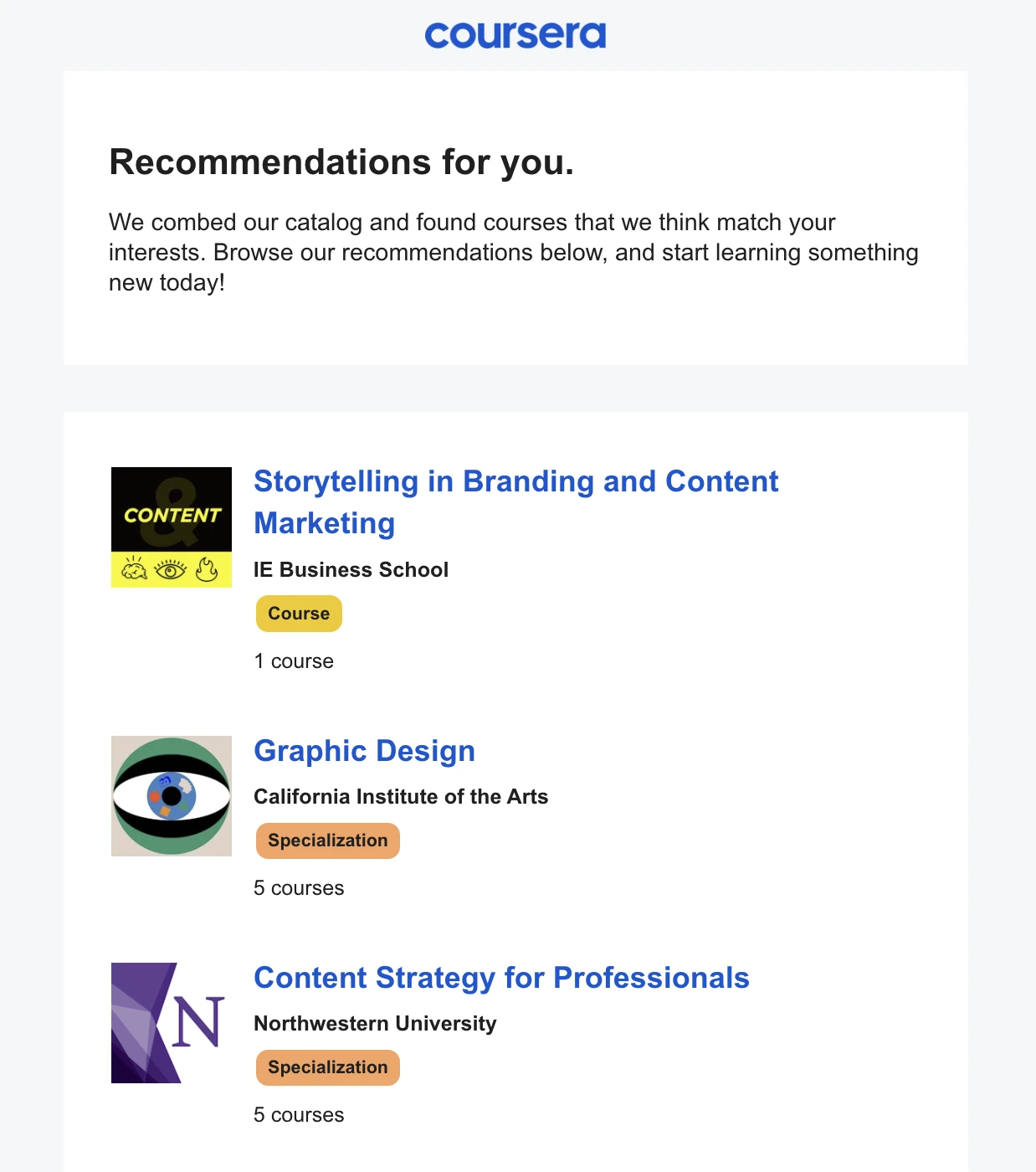
7. Run paid ads
Paid ads are the fastest way to get your course in front of a new audience. By paying to promote your product, you can skip the audience-building steps mentioned in this article. The biggest channels are Meta Ads (Including Instagram and Facebook ads) and Google Ads.
Here’s how a typical paid ads sales funnel works for an online course:
Create a free lead magnet or an affordable version of your course
Promote this via paid ads and collect email addresses on sign up
Promote your paid course or upsell to more expensive products
Paid ads aren’t cheap. If you don’t have a large budget to spend on testing, you’ll benefit from first using free marketing channels to optimize your messaging, course offers, and landing pages. Once you know what works, you can scale these strategies with paid ads.
By connecting your mailing list with Facebook; you can pay to reach a Facebook Audience that is similar to your existing subscribers. You’ve already got the data on who your ideal customer is, so you can jump right into selling to them.
Case Study: ClickMinded
ClickMinded offers training materials for agencies, entrepreneurs and marketers.
The company’s most expensive product costs $4,997. It would be tough to sell this product with a social media ad, so the company instead promotes a single module, which it offers for just $37.
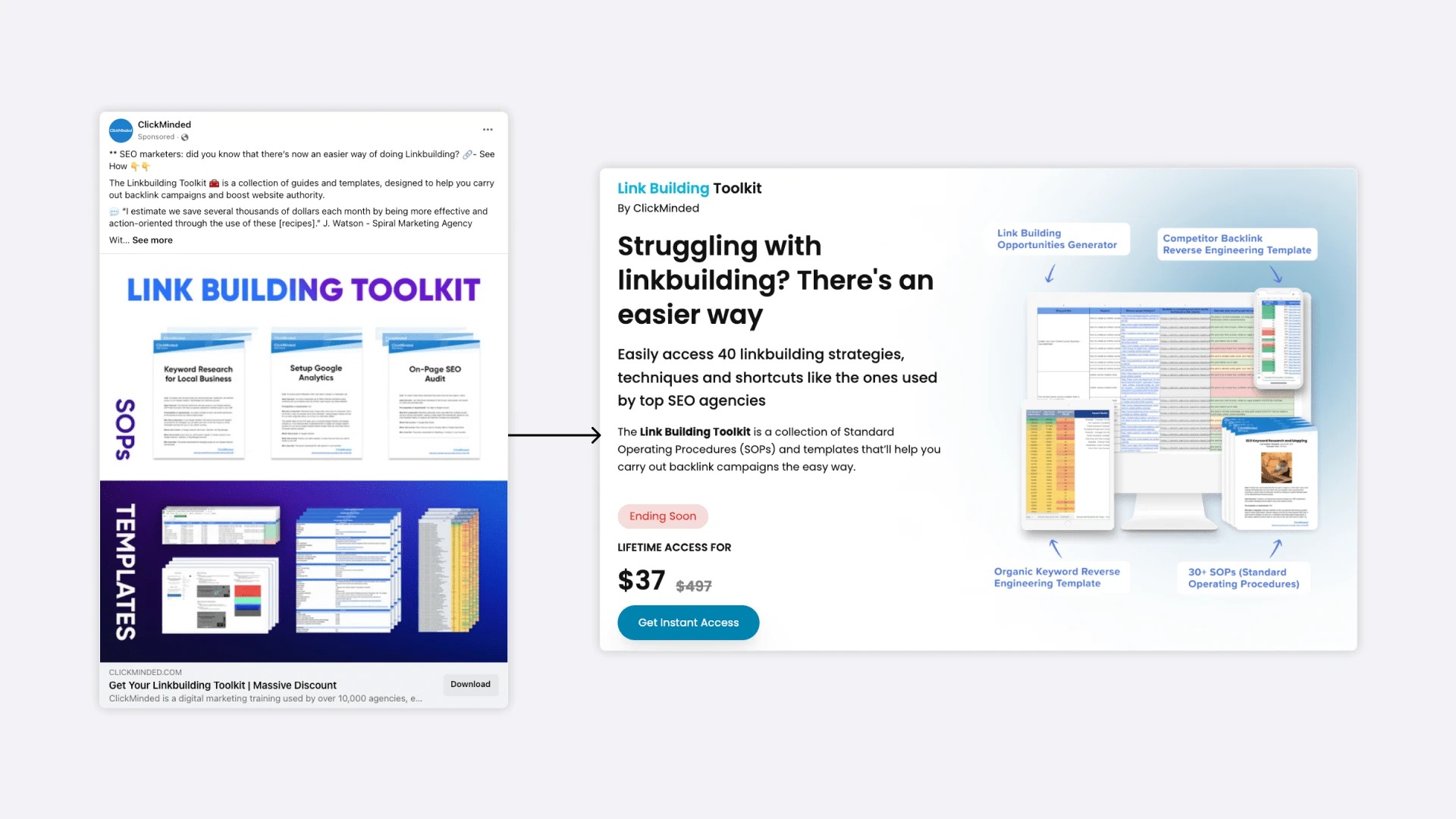
The company also uses an exit intent popup offering a free mini-SOP toolkit to capture people who aren’t yet willing to buy.
ClickMinded can target anyone who signs up for the free or paid course with its more expensive offering.
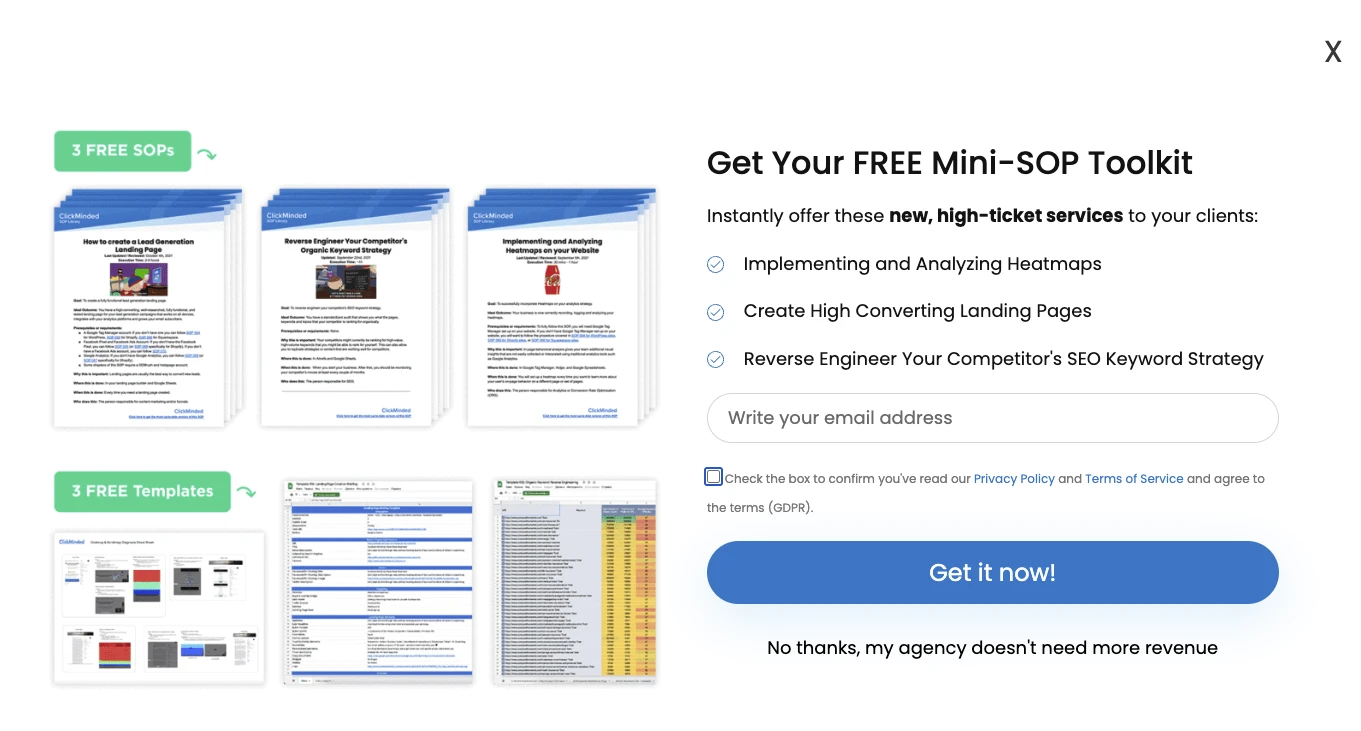
The main paid platforms for course advertising are Google Ads, which includes YouTube and display advertising, and Facebook Ads, which includes advertising on Instagram. Other options include Snapchat, Reddit, Quora, Twitter, and TikTok.
8. Implement an SEO strategy
Search engine optimization (SEO) is the act of optimizing your content and website so it is more likely to show up on search engines when people search for relevant topics.
It’s an immensely valuable part of content marketing, as you can generate highly-targeted traffic at zero additional cost beyond creating the content in the first place.
A typical SEO strategy has 4 parts:
Use keyword research to identify terms people in your audience search for
Filter these keywords for those your site has a good chance of ranking for
Create web pages or blog posts that answer these questions and optimize them based on SEO best practices
Promote the content to generate backlinks that tell Google the content is worth ranking highly in the search results
The downside to an SEO strategy is that it takes time to pay off. If your site is brand new, it will be months or longer before your content starts to rank.
Find out more about developing an SEO strategy in our guide to SEO basics here.
Case study: Kopywriting Kourse
The website for Kopywriting Kourse gets over 80,000 monthly visits to its website. These go to its home page and blog posts. The team behind the course can attempt to convert website visitors into paid learners.
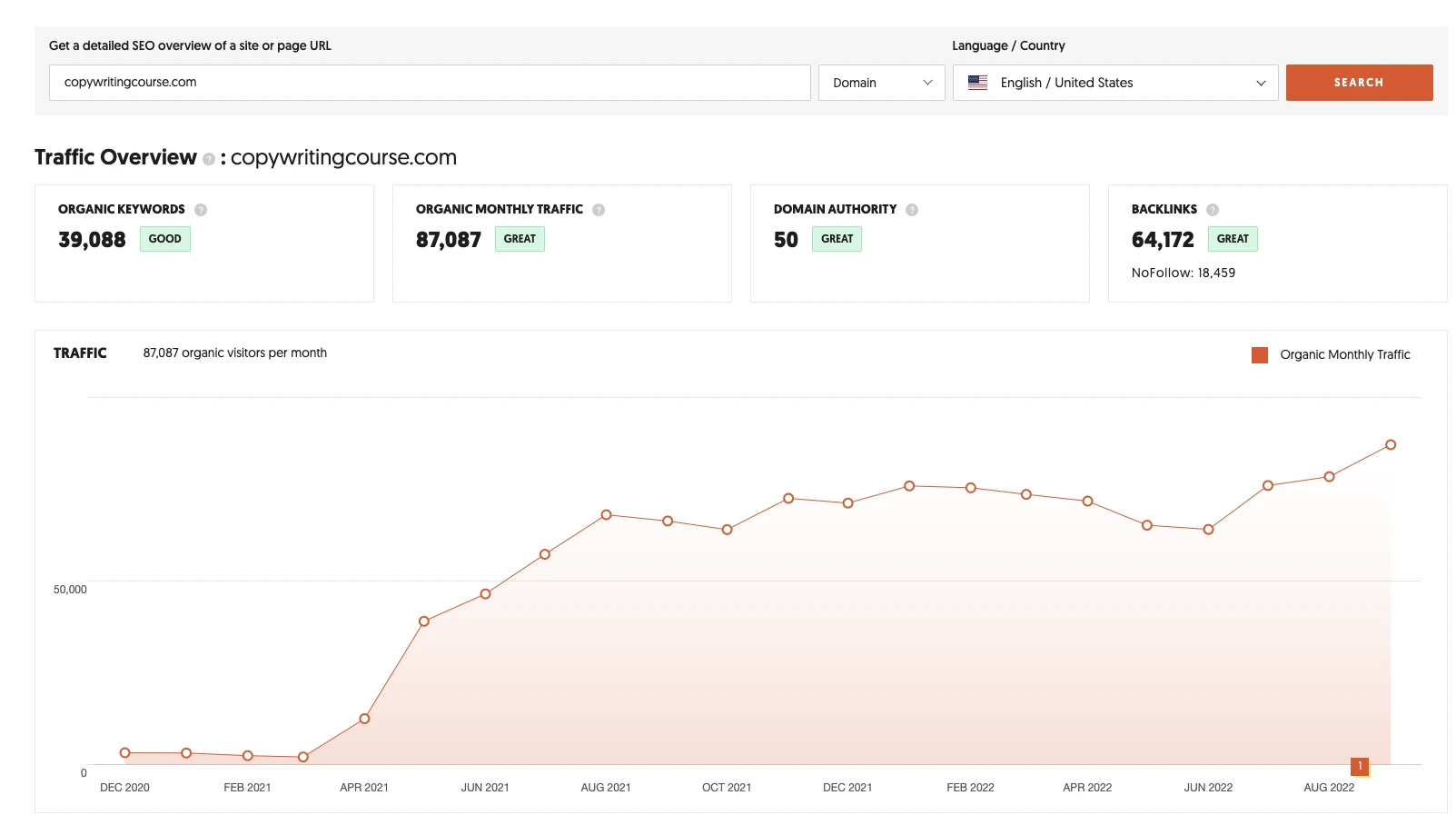
9. Create YouTube videos
Publishing videos on YouTube is an effective way to build an audience because the YouTube algorithm organically promotes content it likes. This means you can increase your audience size without spending on ads.
Remember it can take time to grow your YouTube channel and audience. You’ll have to consistently produce high-quality videos over time to see results, as well as optimize your videos and channel to appeal to the algorithm.
Consider creating videos about the topic you teach in your course, and then promoting the course content in your videos. You can also publish course content on YouTube to give people a sneak peek at what you offer. Find out more about growing a YouTube channel here.
Case study: Ali Abdaal
Ali Abdaal built an audience on YouTube that he monetizes by selling a course.
He creates videos on productivity, time management, and study hacking. He uses these to promote his course The Part-Time Youtuber Academy, which he says earned $2.5 million in revenue in 2021, and his Skillshare classes, which earned over $700,000 in the same year.
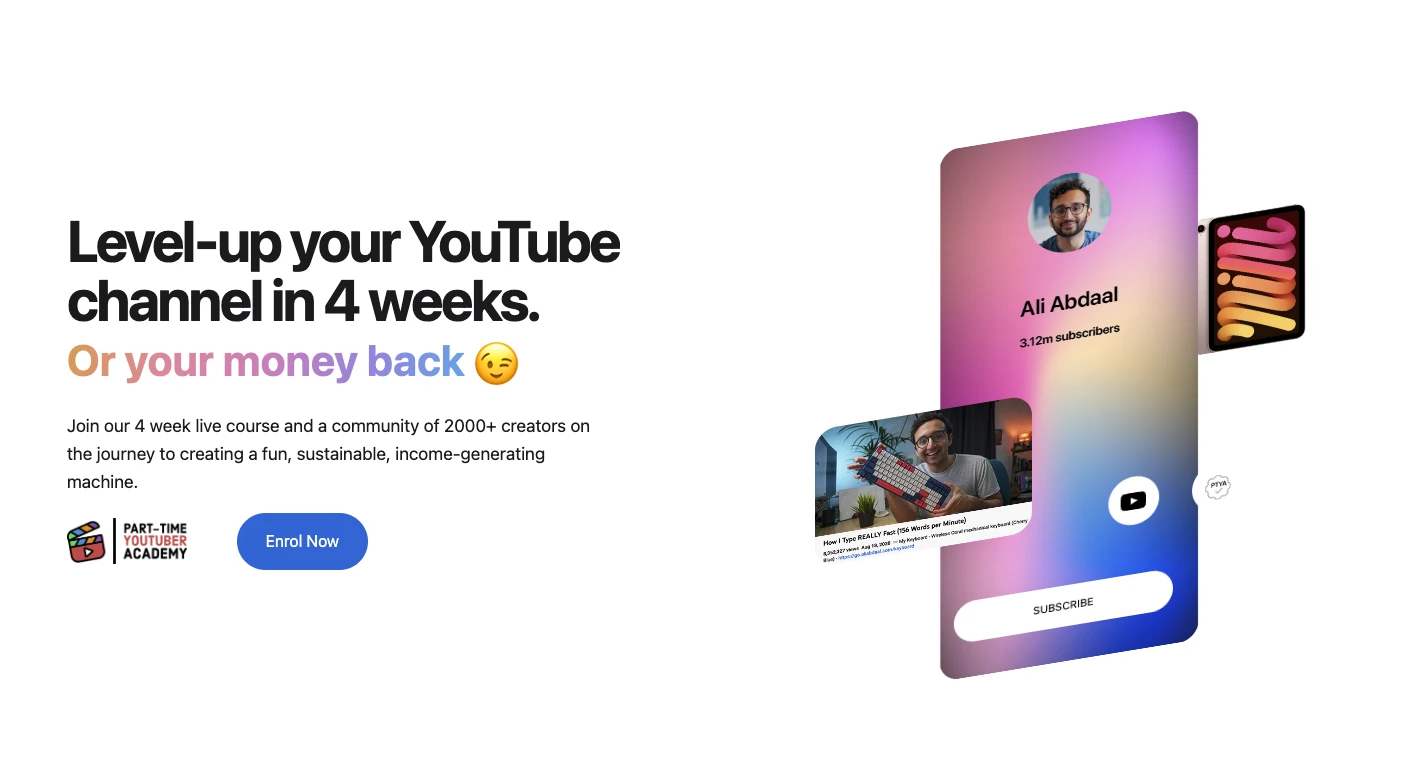
10. Use online course platforms
Get more sign-ups by adding your course to a platform that will market it for you. Udemy and Skillshare are perhaps the most well-known.
Both websites have existing audiences that can sign up for your course when they find it by either:
Searching for your course topic
Clicking on recommendations as they browse the platform
Both platforms have different business models that impact how you get paid. Udemy lets creators upload their course and then sell it on the platform. It’s free to use, but the company takes a percentage of your sales.
If the sale comes through one of the instructor’s promotional coupons, Udemy only takes 3%. If the sale comes via the Udemy platform, the company will take 63% of the revenue.
Skillshare is a platform more like Netflix or Spotify. Anyone who pays to access the platform can access any of the courses, and Skillshare says you’ll receive between $0.05 and $0.10 per minute watched.
Even though these platforms can help you reach new customers, you’ll need to promote them yourself in the early days to gather traction. Additionally, these platforms don’t share student’s email addresses, so there’s no way to build a connection with them and promote future courses.
Case Study: Phil Ebiner
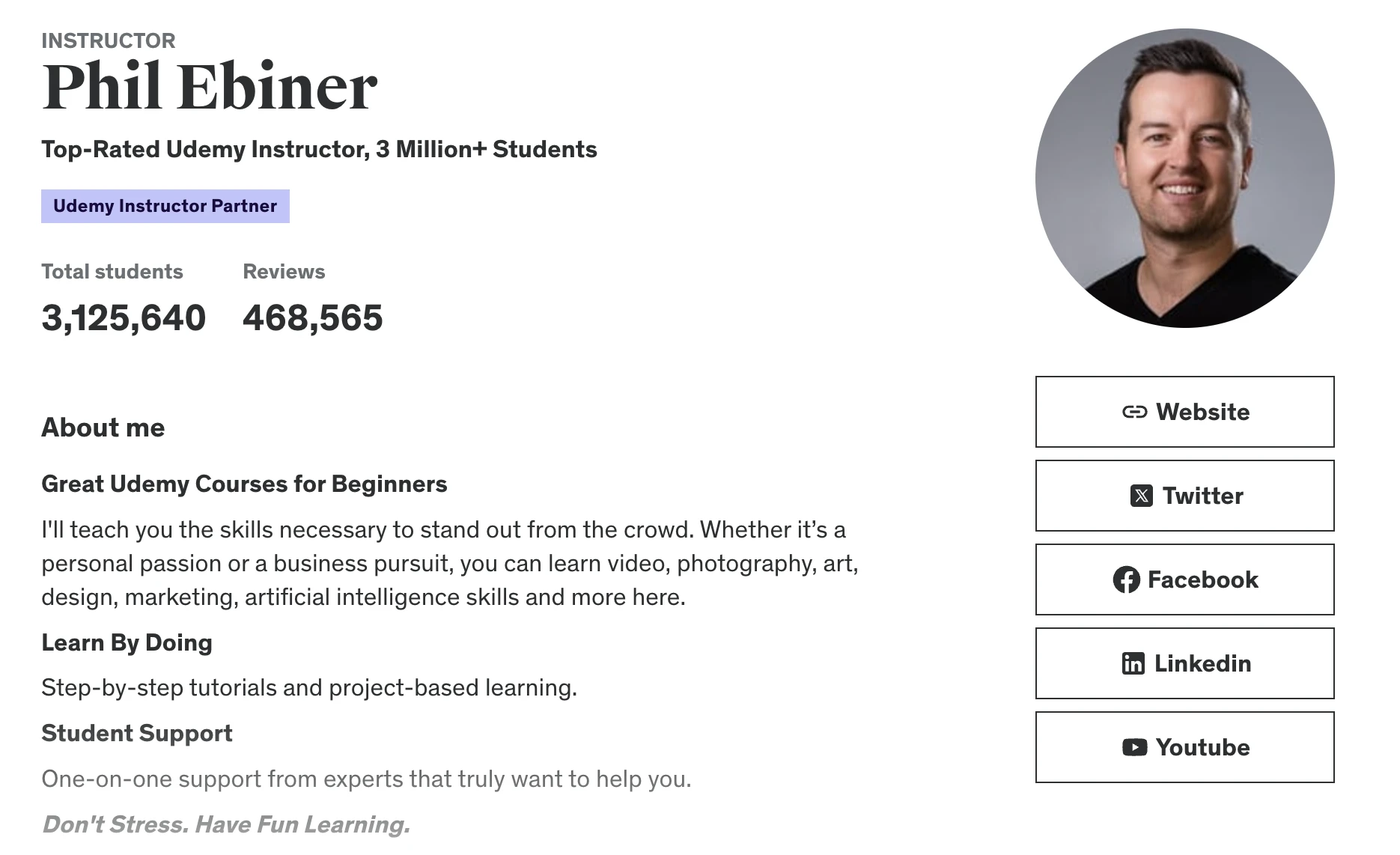
Phil Ebiner has taught over 3,125,640 students on Udemy and says he’s earned over $1 million on the platform. He has over 200 courses on the platform.
11. Blog on Medium
Starting a blog and building traffic through SEO is a good way to get traffic. But it can take a lot of time to find success with SEO. What do you do if you want faster results?
Eincode founder Filip Jerga recommends writing on blogging platforms like Medium. Posts on Medium can be effective because the platform promotes your content to its users, increasing the visibility of your brand beyond your current audience.
Write blog posts on platforms like Medium about topics related to your course. While the competition can be high, posts with an authentic, unique voice can still drive traffic to your course.
Plus, Medium posts appear on Google so you can still get the same SEO benefits as if you started your own blog.
Case study: Filip Jerga
Filip Jerga writes articles on topics related to the courses he sells. He adds a call to action to the blog post so people can find out more if they are interested in the topic.
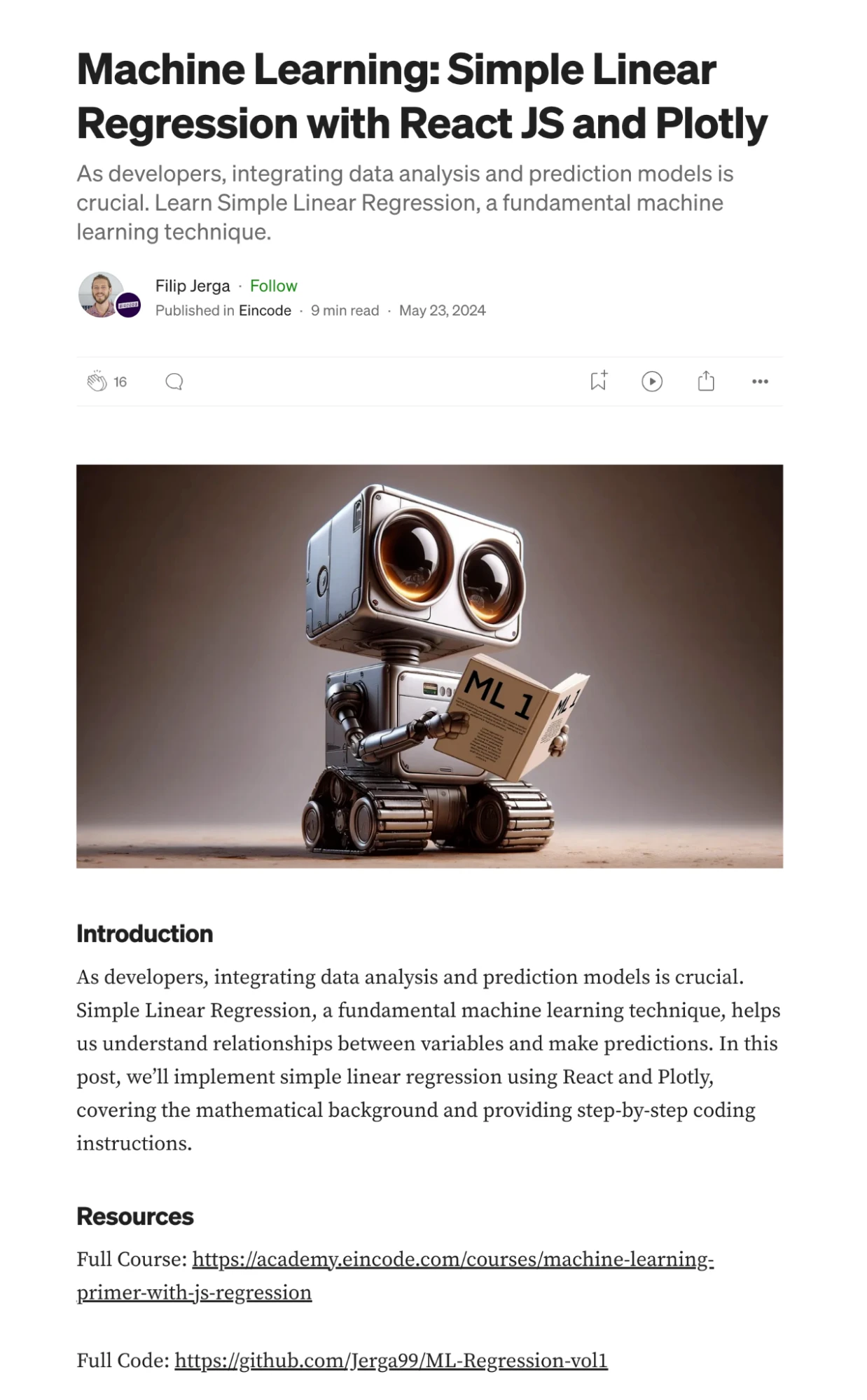
Filip also has a Medium publication specifically for his course business, so people who are interested can subscribe to receive all relevant posts.
12. Become a guest on podcasts
There are podcasts on almost every topic imaginable. Podcast hosts are always looking for fresh ideas to feature in their latest episodes.
Use this to market your course by finding podcasts on related topics and approaching the host about becoming a guest. Choose the right podcast and you’ll get your brand in front of a large number of potential customers.
The key when approaching podcast hosts isn’t to talk about your course. Instead, talk about your expertise and why it is interesting to the podcast audience. Below is a great example of how you can do this.
Case study: Giovanni Marsico
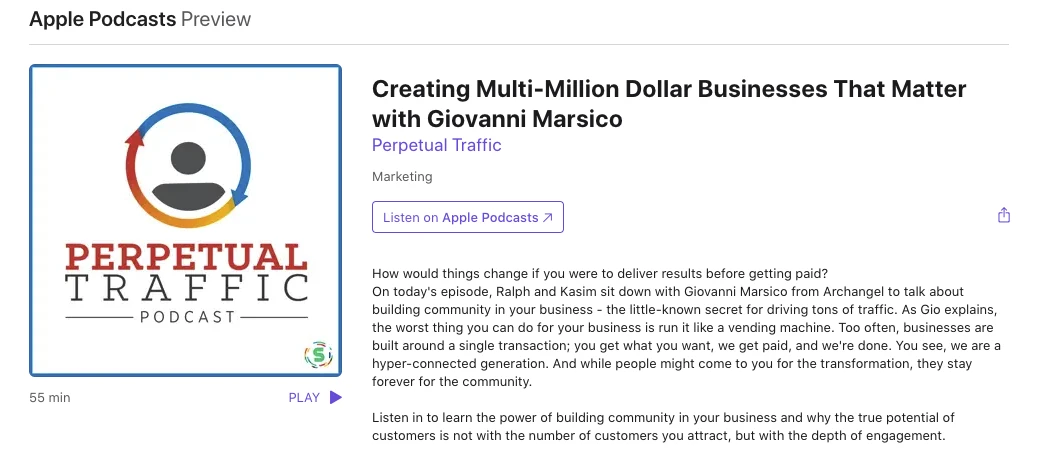
Giovanni Marsico runs Archangel, a course for entrepreneurs who want to create businesses by sharing their gift.
He was a guest on the Perpetual Traffic podcast, where he discussed strategies for building community.
This provides a ton of value for podcast listeners, as building a community can result in significant website traffic. And, by talking on the podcast, Giovanni was able to increase awareness around his course.
13. Create an affiliate program
Affiliate marketing is where people promote your online course and earn a commission when someone they refer signs up. Marketers might promote your course via social media, video tutorials, online reviews, or how-to blog articles.
The great thing about affiliate marketing is that you only pay when you generate signups. This means it’s easy to stay profitable.
It’s also easy to use a tool like Partnero to manage your program. What's more, MailerLite Advanced customers get 30% off the first year of any Partnero plan. See the deal in the Partner offers section of your MailerLite dashboard.
It can be tough to find affiliates, especially if your course isn’t well-known. Boost the chances of finding affiliates by increasing the percentage you pay out and ensuring you effectively convert the traffic they send your way.
Affiliate marketing also works best if your course has a high price point, since affiliates are more incentivized to promote courses that result in large payouts.
Case study: Authority Hacker
Authority Hacker has several courses that teach online marketers how to build and monetize niche websites. They have an affiliate program that promises to pay up to $990 per sale generated through a referral.
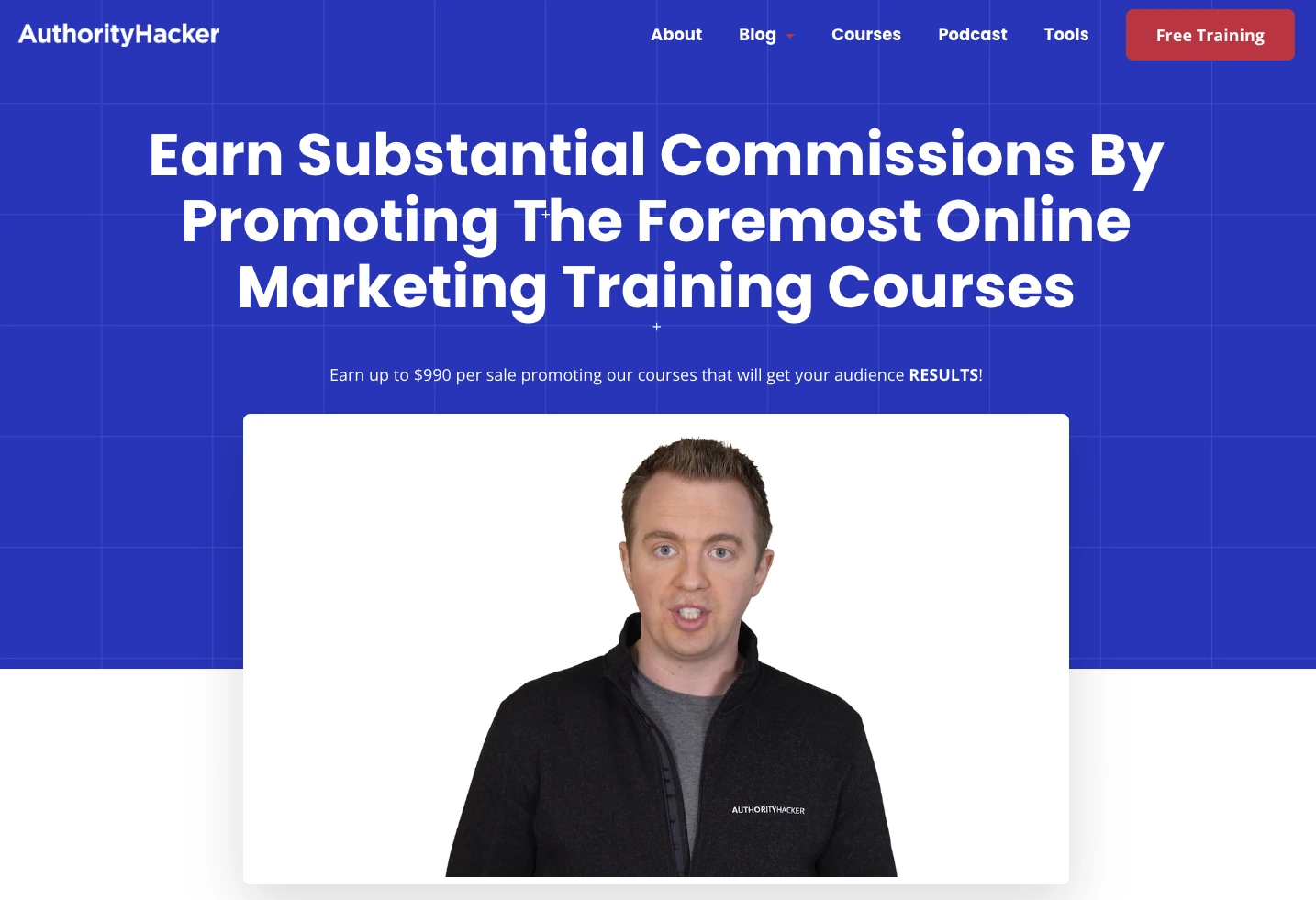
14. Run a webinar
Run a free webinar on a topic that is related to your course. If people find your webinar content valuable, there’s a good chance they’ll sign up for your course. Learn about how to promote a webinar in this article.
Also, be sure to record your webinar. You can use a recording of it to highlight the type of content you create. You could even use the recording as a lead magnet to encourage people to join your email list.
Case study: MailerLite
At MailerLite we run webinars on various topics related to email marketing. We know that anyone joining these sessions is interested in learning more about email marketing, so they’re also a great opportunity to promote our courses.
Plus, we have a webinar section on our website where anyone can watch these sessions on demand and learn more about email marketing.
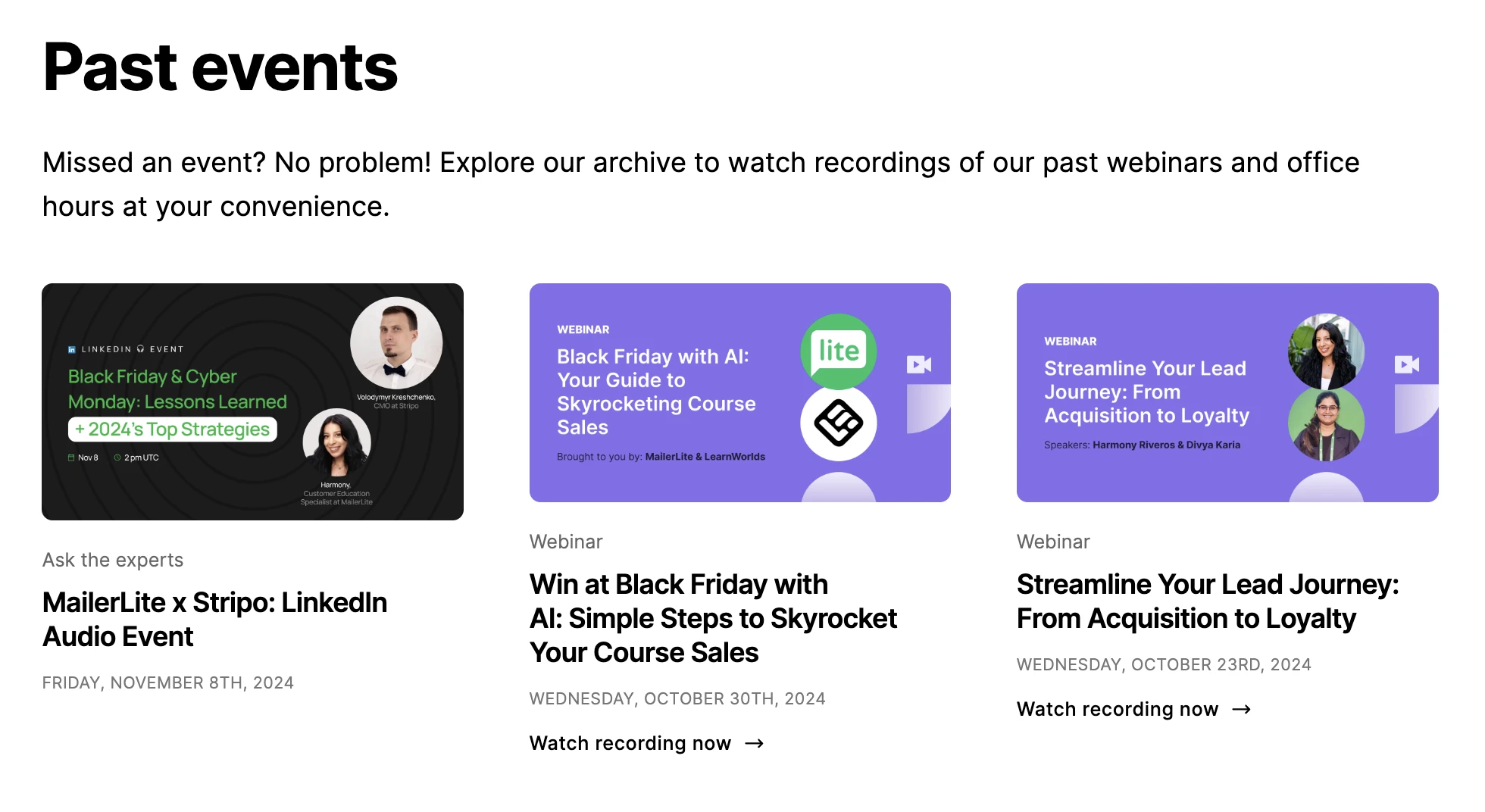
15. Do an audience swap
Find someone with an audience in your niche and agree to promote each other’s products or courses to your respective audiences. This could also work for any platform that you have an audience on, whether that’s social media, YouTube or a blog.
Case study: Growth Tools
In a recent podcast, Bryan Harris from Growth Tools explained his strategy for growing by borrowing an audience. The strategy lets you reach a ton of people without going through the time-consuming and expensive process of growing your audience.
The basic idea is that you first discover people with an audience you want to reach. You then reach out to them and pitch a way that you can add value to their audience.
That could be:
Appearing as a podcast guest
Contributing to a newsletter
Featuring in a YouTube video
Speaking at an event
The most important step is to provide a ton of value and offer a free lead magnet to people who want to find out more. Once someone joins your list via the lead magnet, you can start promoting your course.
Here’s a look at the free lead magnet that Growth Tools offered to listeners of the podcast.
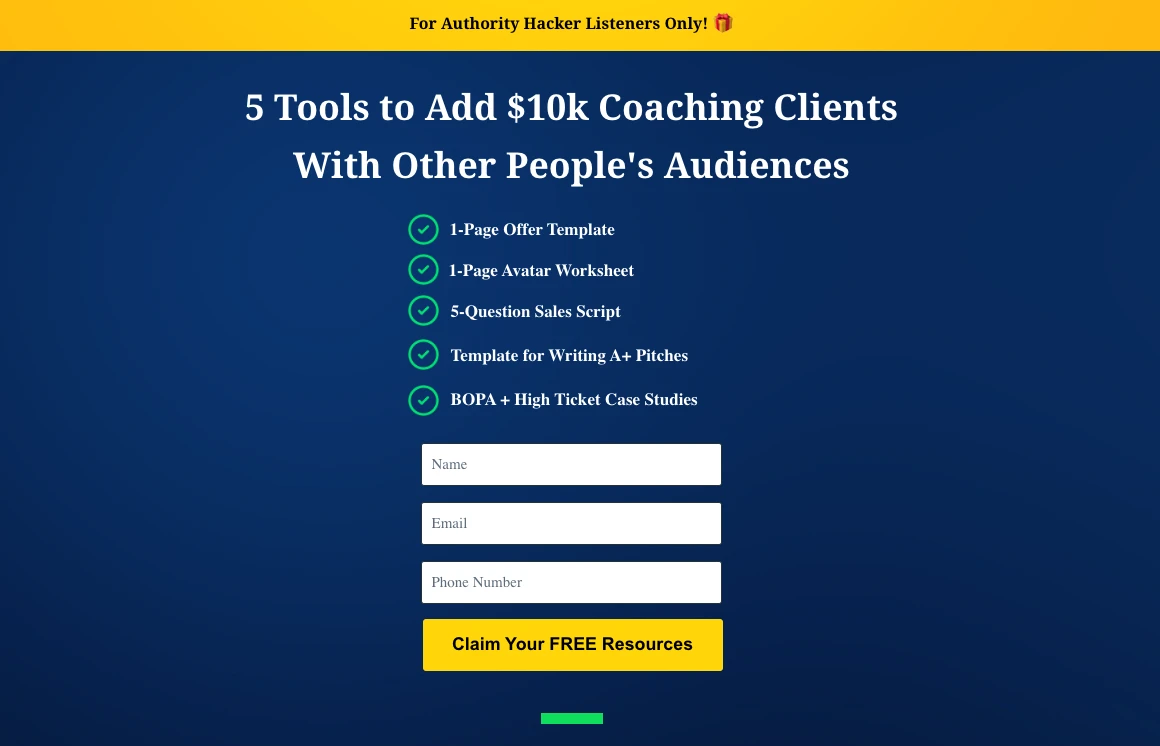
16. Build a tool people can access with their email address
Build a tool or directory related to the problem you solve and offer people free access in exchange for their email addresses. You can then promote your course to people who sign up. Even non-developers can use no-code tools like Webflow, Notion and Bubble to build complex products.
Case study: 100 Days of No Code
100 Days of No Code built a directory of no-code tools that people can access by providing their email addresses.
Those interested in the directory are also likely to be interested in the brand’s no-code courses. Founder Max explained that they generated 3,000 subscribers in just 10 days after launching the directory on ProductHunt.
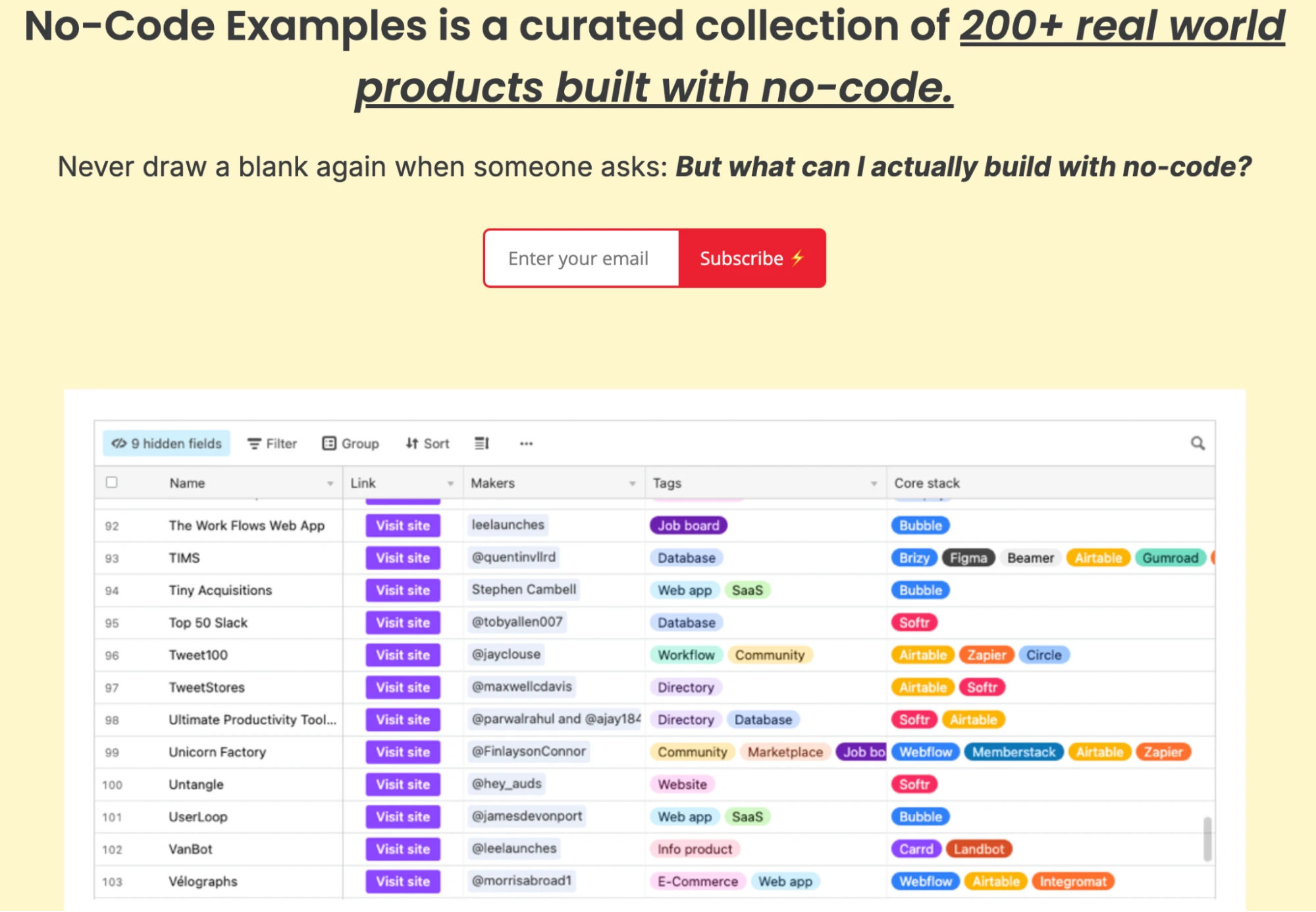
17. Run a referral program
Referral programs are similar to affiliate programs in that they give the person who makes the referral a bonus when they generate customers for your course.
The difference is that they are built to help your existing customers share your course with people they know. These recommendations build even more trust since they are being made by people who have taken your course.
A good referral program will typically offer a gift to both the person receiving the referral and the person making it. Once your program is set up, you can use referral program promotion emails to tell people about it and encourage them to sign up.
Case study: Alison
Alison’s referral program gives the person making the referral 50% off a course and the person being referred 10% off their first purchase. Since these gifts are only made when someone purchases, the business only pays out when they earn making it a very low-risk strategy.
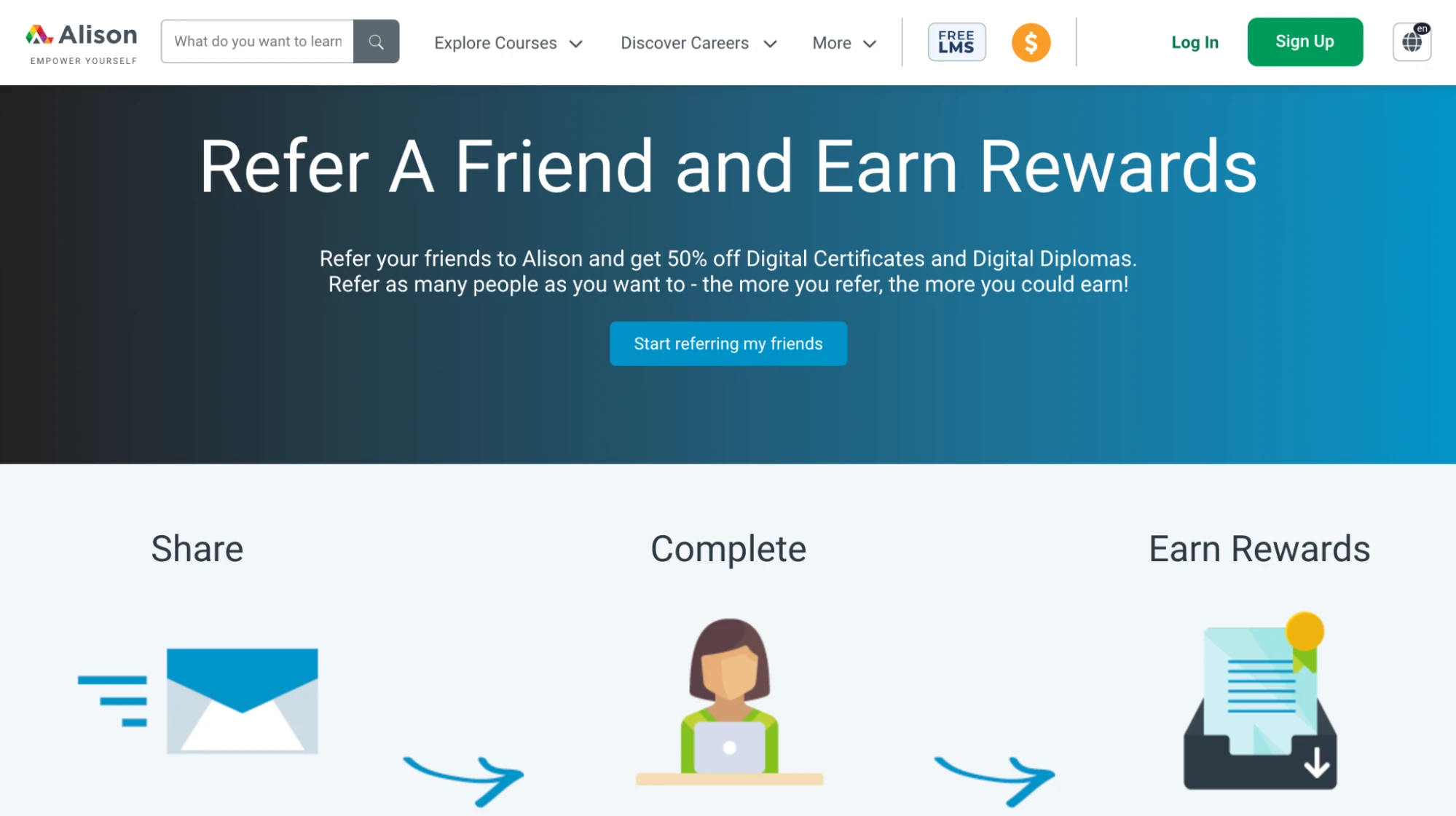
18. Start a podcast
If there aren’t many podcasts in your industry, start one! Podcasts are hard to grow (here are some podcast marketing tips to help) but they are a great way to build deep connections with your audience. And deeper connections are more likely to lead to sales.
Case study: SPI podcast
Pat Flinn uses his Smart Passive Income podcast to promote his SPI community, which comes with tons of courses that entrepreneurs can use to start, grow, and scale their small businesses.
He provides tons of value in every episode while regularly mentioning the course in both the podcast content and the description.
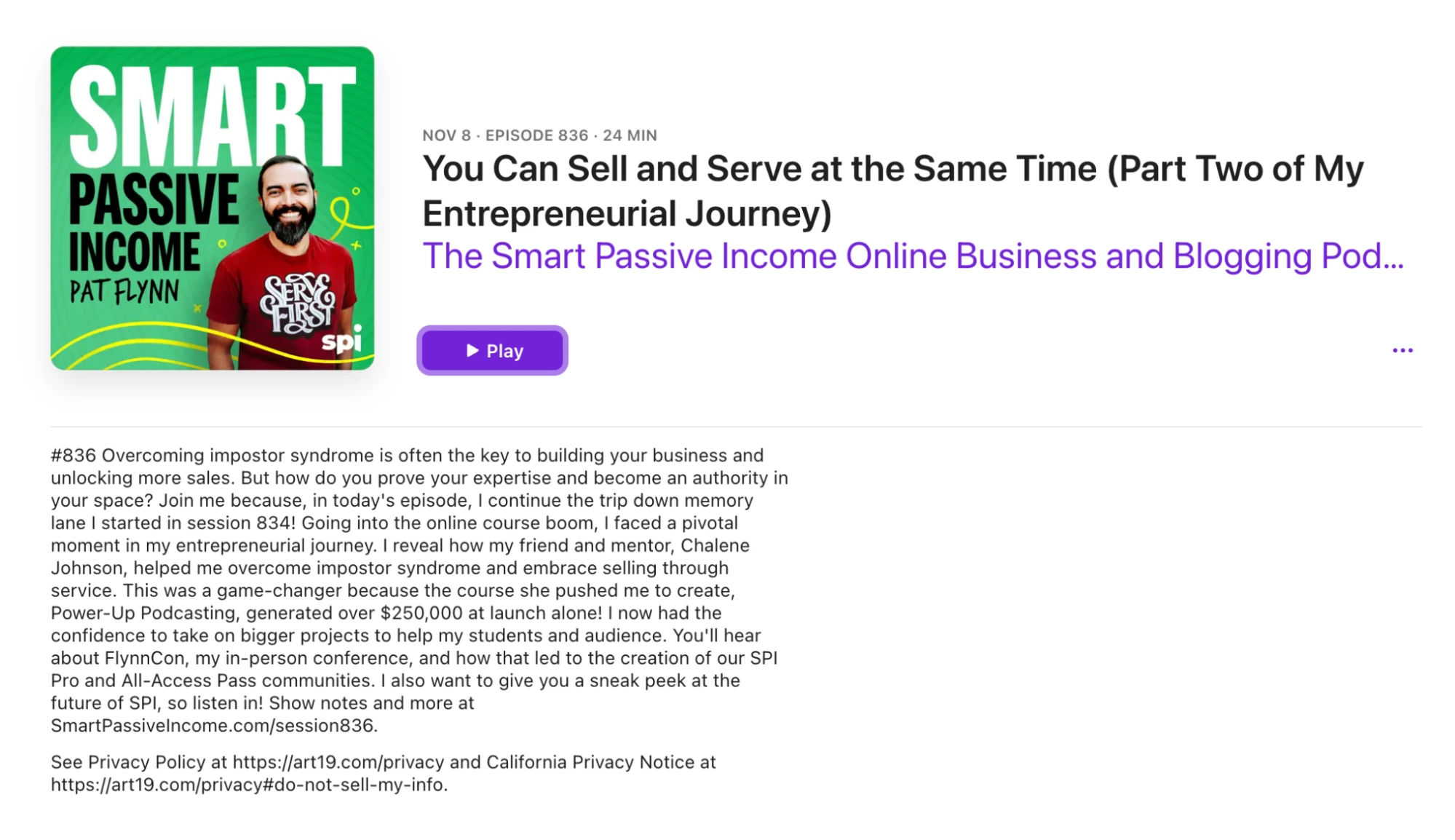
19. Run sweepstakes or giveaways
Social media sweepstakes or giveaways give your target audience the chance to win a prize if they share your brand or product. This can be a good way to build your social media following or email list.
There are 2 keys to a successful giveaway. First is to choose the action you want to achieve, such as growing your email list, and then making this part of entering the competition.
The second is to choose a prize that relates to your course. While you’ll get a ton of signups if you offer an iPhone as a prize, you’ll get more valuable connections if you offer prizes that only appeal to your audience.
Case study: Marie Forleo
B School founder Marie Forleo ran a giveaway that gave someone from her audience a spot on her Time Genius course.
Using her course as a prize ensures that she only attracts people who are interested in taking her course. And she achieves the goals of more social visibility and a larger email list by requiring entrants to:
Follow her account
Comment on it
Sign up for her insider email list
She also lets people get extra entries by tagging their friends in the post and sharing it in the stories.
20. Feature on “Best course” lists
Google “Best course” plus your topic to find lists of courses. Contact the website owners and ask them to include your course. If they agree, you’ll get your course on lists that target people who are specifically interested in a course like yours.
People who rank for these keywords will often get a lot of requests. Here are some tips from our content writer Kerry, whose personal website ranks highly for the term "Best SEO copywriting course."
Build a relationship with the person writing the list
Connect on LinkedIn and engage with their posts
Remember they're probably adding their own course to these lists. Highlight how your course can complement theirs or serve a different type of audience
Add a testimonial from a happy student in the pitch to show you're trustworthy
Add stats about how many students have taken the course
Tell them what makes you qualified to teach the subject
Case study
Ahrefs estimates that this blog post about the best French language courses gets around 2,300 visitors every month. This likely results in a lot of traffic and customers for the featured courses.
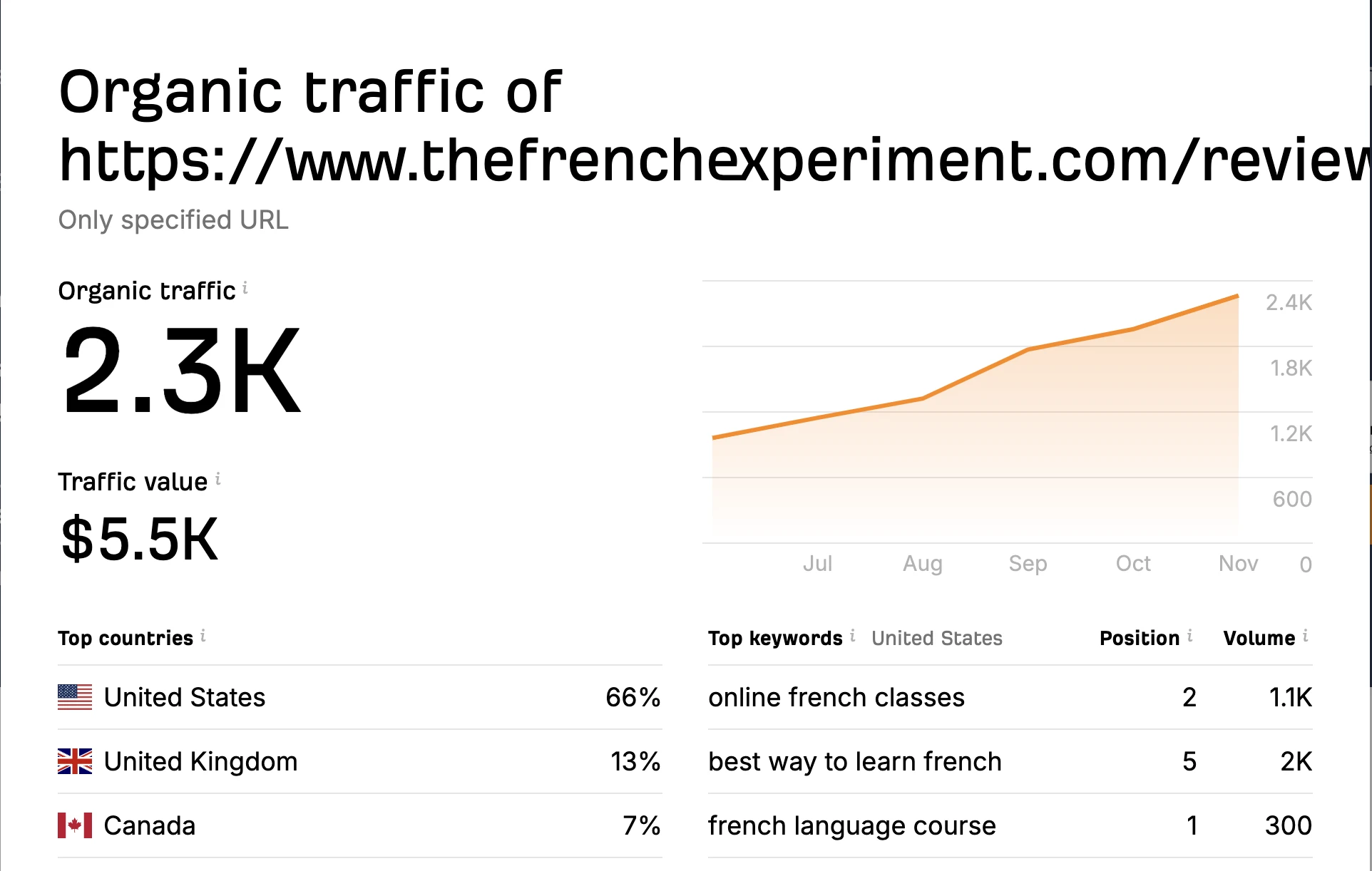
21. Answer journalist requests
PR has long been a popular way for brands to get exposure. While it may seem like a complex and expensive field, you don’t actually need a big PR team to get visibility.
Instead, use services that help journalists and writers get expert input for their articles. As a course creator, you’re an expert in your field, so people may be willing to feature your quotes in their articles.
Case study: Qwoted
Qwoted is a tool that connects writers with experts. When you sign up for a profile on the service, you’ll start to receive suitable requests for comments. Replying to these requests could get your ideas and brand featured in articles.
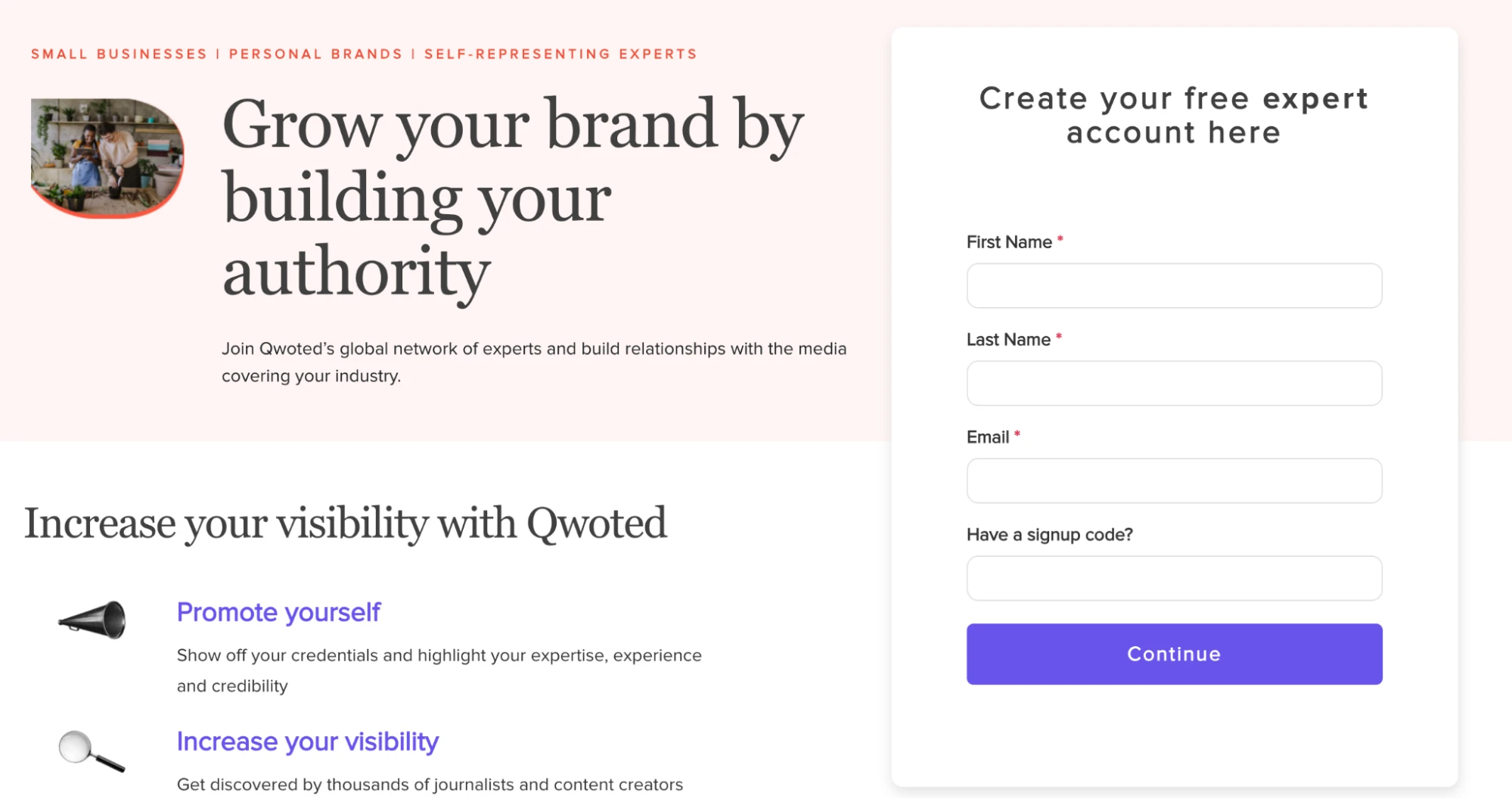
22. Create a free community
Anyone can create a free community with tools like Facebook Groups or Slack. Create one that discusses the topic of your course and invite people to join. You can then promote your paid courses to people in the community.
Case study: Superpath
The Superpath community is a free Slack group that discusses content marketing. Anyone can join the free channels but the brand also offers paid communities and learning resources that people can only access if they sign up for a paid plan.
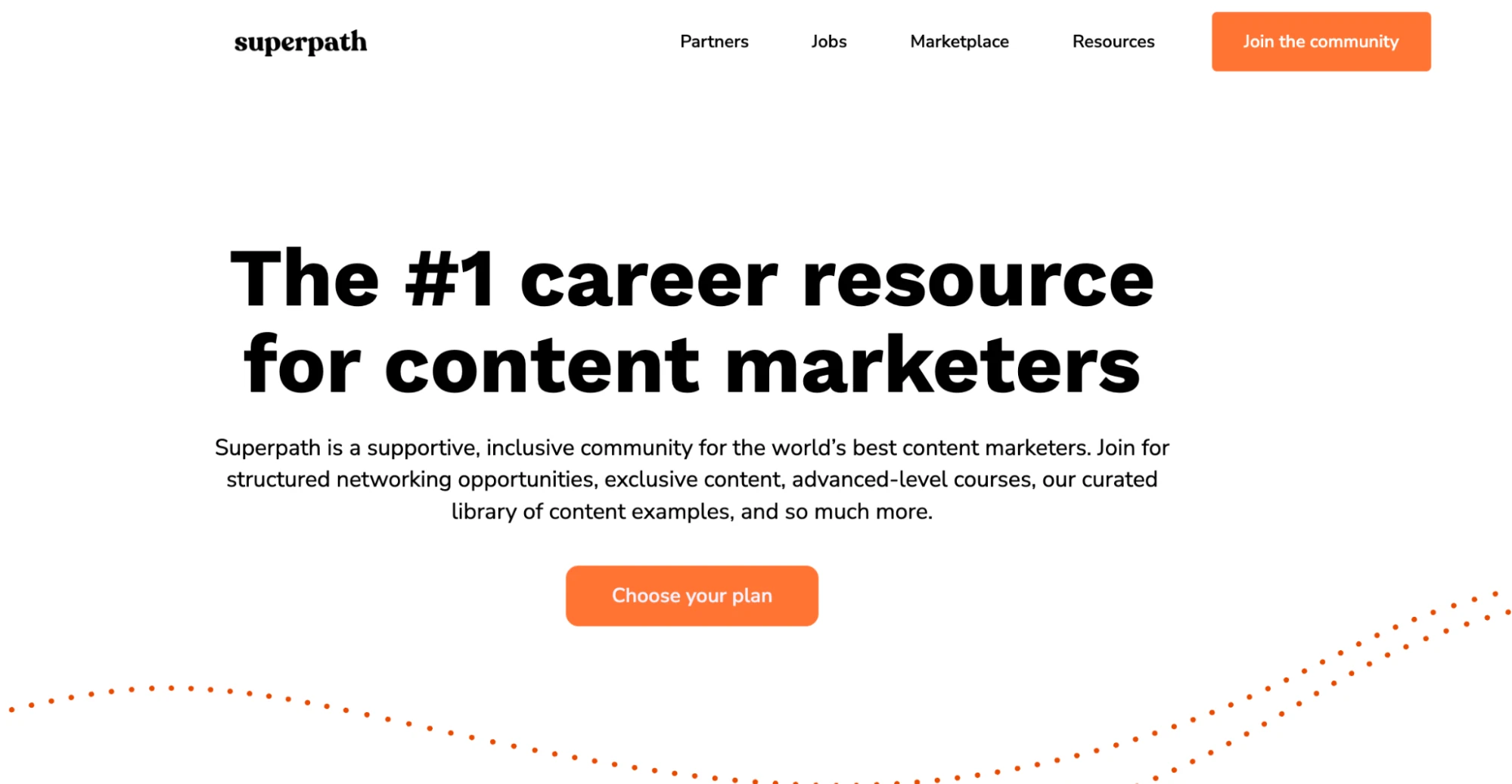
Marketing is as important as the course itself
It’s not enough to have a great idea for a course. It’s almost impossible to make sales without actively marketing and promoting it. Use these tips to ensure your course gets the attention it deserves!
Grow your course with MailerLite
Generate course signups with powerful email marketing tools then collect payments with our Stripe integration. Build automated email workflows, landing pages, websites, and more. Plans start at $9 per month.
